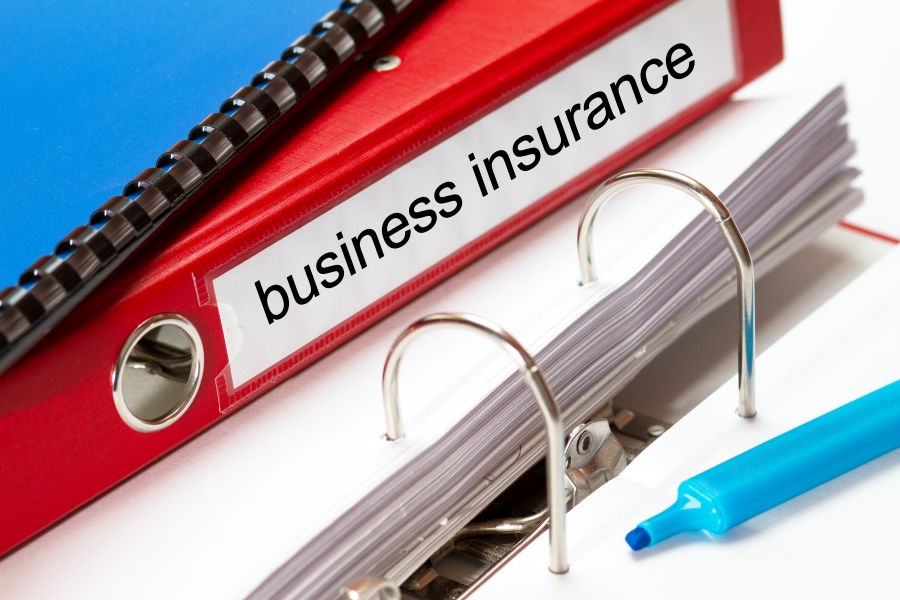
As a business owner, you’ve probably noticed that the cost of commercial business insurance is rising. With market trends impacting rates and coverage availability, business owners are looking for new ways to control their insurance costs while managing their risks.
How Much Does Business Insurance Cost Today?
Business owners haven’t been able to catch a break from rising insurance prices for a while. According to the Council of Insurance Brokers & Agents (CIAB), the fourth quarter of 2023 marked the 25th consecutive quarter of property and casualty rate hikes. That’s more than six years of unrelenting price increases. In the fourth quarter of 2023, premiums across all commercial lines increased by an average of 7%.
However, some lines of coverage enjoyed rate stability. Directors and officers liability insurance was nearly flat, increasing by an average of just 0.1%. This is a major change compared to just a couple of years ago, when double-digit rate hikes were the norm. Cyber insurance rate hikes have also cooled noticeably: they were up by just 0.7%, whereas they surged by 34.3% in the fourth quarter of 2021.
Although many business owners are likely relieved to see improvement in these lines, hikes in other lines mean that overall business insurance costs are still increasing. CIAB says commercial auto insurance rates were up by 7.3%, general liability by 3.8%, and umbrella insurance by 7.6%.
Some of the biggest insurance price hikes occurred in commercial property insurance, with rates up by 11.8%. This steep price hike is actually somewhat of an improvement. Prices were up by 17.1% in the third quarter, 18.3% in the second quarter, and 20.4% in the first quarter.
Factors Impacting Commercial Property Insurance for Businesses
Commercial property insurance costs have been surging in response to several factors, notably inflation and natural disasters.
Recent high inflation rates, rising wages, and supply chain issues have had a significant impact on building costs for both commercial and residential construction. According to the National Association of Home Builders, median square foot prices increased by more than twice the rate of inflation in 2022. For the insurance industry, higher construction costs mean higher claims costs.
Natural disaster losses have also been surging. According to the World Economic Forum, California’s wildfires have been increasingly causing more damage. The cost of mitigation rose from $61 million in the 1990s to more than $400 million in the 2010s. The number of acres burned has also been increasing.
Storms, including severe thunderstorms and hurricanes, have also been leading to larger losses. In 2023, the National Oceanic and Atmospheric Administration recorded 28 separate weather and climate disasters with losses of at least $1 billion in the U.S. No other year in history has seen as many billion-dollar events, even when adjusted for inflation. The 2023 events included Hurricane Idalia as well as the Hawaii wildfire, flooding, tornadoes, hailstorms, and other severe weather events.
With natural disaster losses mounting, some insurance providers have been pulling out of difficult markets, particularly California and Florida. The Press Democrat says Farmers Direct Property and Casualty Insurance Company, Allstate, State Farm, Farmers, and USAA have all decided to limit their business in California or pull out the state, whereas Bankrate says Farmers Insurance, Bankers Insurance Company, AIG, and Lexington Insurance have all limited business in Florida or exited the state. These insurance exits give policyholders fewer options for coverage, making it even more difficult to find affordable rates and adequate terms.
Factors Impacting Commercial General Liability Insurance
While natural disasters and inflation are driving up property insurance costs, other factors are impacting commercial general liability insurance costs for businesses. As a result of these factors, your general liability insurance policy may cost more.
Third-party litigation funding (TPLF) has experienced a boom in recent years. According to the Institute for Legal Reform from the U.S. Chamber of Commerce, TPLF started in the 1990s in Australia and then spread around the globe as a way for third-party funders to provide money to plaintiffs in exchange for a portion of the settlement or awards. Currently, TPLF represents an estimated $13 billion in assets under management in the U.S. Although proponents of TPLF argue that it allows poorer plaintiffs to seek justice, the Institute for Legal Reform argues that funders focus on achieving a large return on investment rather than justice.
Swiss Re argues that TPLF incentivizes litigants to initiate and prolong lawsuits, resulting in longer cases and higher legal expenses. This leads to higher claims costs that drive up insurance rates. TPLF is often identified as a main reason for social inflation – the increase in litigation costs beyond what can be explained by economic inflation. Swiss Re says U.S. liability claims costs increased by 16% on average for the last five years, warning that the current rate of claims inflation is unsustainable.
Taking Control of Your Commercial Business Insurance Cost
For businesses, the rising cost of insurance coverage puts pressure on already thin profit margins. According to KCRA, an adventure park in California recently announced it was closing for good due, at least in part, to unaffordable insurance costs. Similarly, Claims Journal says bars and restaurants in South Carolina are facing closures due to high liability insurance costs.
To stay in business, companies need to find ways to take control of their risks and save money.
Risk management is a good start. When businesses control their risks, they make themselves more attractive to insurance companies. Here are two ways to take control:
- Mitigate property losses. Businesses should take proactive steps to prevent property damage. Upgrades that reduce wildfire and storm risks require some upfront investment, but they may help businesses avoid major losses, improve their claims history, and secure more affordable insurance.
- Identify and control loss drivers. Since liability exposures vary depending on the industry, it’s important to identify the main claim triggers for your business. Once you know what these loss drivers are, you can take steps to prevent claims.
As insurance rates surge across the board, some business leaders may find that good risk management isn’t enough to rein in their commercial business insurance costs. This is because a company’s loss history isn’t the only thing insurance companies consider when pricing coverage – industry trends and market fluctuations also impact rates. Right now, those trends are working against business owners.
How Captive Insurance Helps Business Owners Take Control of Costs
Captive insurance offers a solution. For decades, large companies have used captive insurance to take control of their insurance costs. Through the member-owned group captive model, midsize companies can also take advantage of the captive structure. If your company provides health insurance for more than 50 employees and pays more than $250,000 for primary casualty insurance premiums, it may be a good candidate for a captive program.
Alternative Risk Underwriting (ARU) uses a proprietary captive structure that minimizes volatility and writes risk in partnership with A.M. Best A+-rated insurance carriers.
If you’ve already implemented strong risk control measures but you are still dealing with high insurance costs and insurance market fluctuations, a group captive program may be the ideal way for you to exercise greater control over your costs and coverage. Group captive members own 100% of the investment income and underwriting profit. Plus, they can access unbundled services to craft a program that fits their unique needs.
Our group captive program can provide workers’ compensation, general liability, product liability, commercial auto, commercial property, business interruption, and health insurance for employees.
Interested in learning more? We can collaborate directly with you or with your broker.
Learn more.
